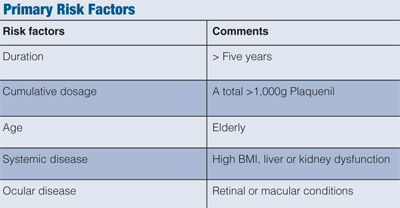Hydroxychloroquine has similar pharmacokinetics to chloroquine , with rapid gastrointestinal absorption and elimination by the kidneys.
Antimalarials are lipophilic weak bases and easily pass plasma membranes. The free base form accumulates in lysosomes acidic cytoplasmic vesicles and is then protonated , [23] resulting in concentrations within lysosomes up to times higher than in culture media. This increases the pH of the lysosome from 4 to 6. Hydroxychloroquine increases [29] lysosomal pH in antigen-presenting cells.
In inflammatory conditions, it blocks toll-like receptors on plasmacytoid dendritic cells PDCs. Toll-like receptor 9 TLR 9 recognizes DNA-containing immune complexes and leads to the production of interferon and causes the dendritic cells to mature and present antigen to T cells , therefore reducing anti-DNA auto-inflammatory process. In , a novel mechanism was described wherein hydroxychloroquine inhibits stimulation of the toll-like receptor TLR 9 family receptors.
TLRs are cellular receptors for microbial products that induce inflammatory responses through activation of the innate immune system.
Is there a shortage of Hydroxychloroquine (Plaquenil) or chloroquine?
As with other quinoline antimalarial drugs, the mechanism of action of quinine has not been fully resolved. The most accepted model is based on hydrochloroquinine and involves the inhibition of hemozoin biocrystallization , which facilitates the aggregation of cytotoxic heme. Free cytotoxic heme accumulates in the parasites, causing their deaths. It is frequently sold as a sulfate salt known as hydroxychloroquine sulfate. On 13 February , hydroxychloroquine and chloroquine were recommended by a South Korean task force for the experimental treatment of coronavirus disease COVID A randomized controlled trial by Chinese researchers showed no positive effect with hydroxychloroquine at a dosage of mg per day.
From Wikipedia, the free encyclopedia. Antimalarial medication. For the airport, see Halls Creek Airport. IUPAC name. Interactive image.

Main article: Chloroquine retinopathy. Retrieved 21 March Archived from the original on 20 March Retrieved 20 March Tarascon Pocket Pharmacopoeia.
What will happen if I have lupus or rheumatoid arthritis and can’t get my Plaquenil or chloroquine?
Journal of Critical Care. World Health Organization model list of essential medicines: 21st list. Geneva: World Health Organization. Retrieved 31 December Centers for Medicare and Medicaid Services. Retrieved 19 March Typical dose is mg per day. Costs 0. Month has about 30 days. British Medical Association. Retrieved 18 March BMC Musculoskeletal Disorders.
Arthritis and Rheumatism. Transactions of the American Ophthalmological Society. Textbook of Medical Physiology Fifth ed. Philadelphia, PA: W.
Hydroxychloroquine (Plaquenil) | Coronavirus Pills UK
Saunders Company. The American Journal of Emergency Medicine. Prescribing Information" in Russian. Archived from the original on 16 August Retrieved 14 July March Dermatologic Therapy.
- chloroquine buy online shipping to fr.
- Taking Plaquenil for Rheumatoid Arthritis.
- Navigation menu.
Journal of Pharmaceutical Sciences. Bibcode : PNAS The Journal of Cell Biology. The Biochemical Journal.
- Plaquenil Risk Calculators.
- chloroquine phosphate store online shipping to es;
- Lupus Medicines - Hydroxychloroquine.
The Journal of Rheumatology. Medical Pharmacology and Therapeutics 2nd ed. The good news outweighs the bad. If you can, get advance prescriptions now in case the drug does become hard to get later. Most patients can miss doses for a few weeks without developing a disease flare, so long as they can restart it again when the drug is available. This was shown in a study published in by a group of Canadian doctors. To understand whether patients with lupus who are doing well while taking hydroxychloroquine need to continue taking it, the researchers randomized 50 patients who had been taking the drug for at least six months and who had been well for at least three months to take a placebo or to continue the drug.
Coronavirus: 'We hope Plaquenil will save people,' says Sanofi's Olivier Bogillot
For about the first three months, most patients in both groups did well. In other words, the drug is important, but it takes a long time for illness to flare up. Unlike most drugs that work when blood levels rise a few hours after taking a pill, chloroquine and hydroxychloroquine need to saturate the body to be effective. This is why it takes about three months from starting the drug to see its effect.
If you stop taking the drug, it takes about three months to get rid of that which your body has stored. A very small study in China, which provided almost no details, suggested that COVID patients who were treated with chloroquine had somewhat milder cases — shorter hospital stays — than did those who were not. The Chinese study did not say that survival was better or that taking chloroquine prevented illness. Another very small study in France, with substantial limitations on how it was conducted, also suggested clinical efficacy of hydroxychloroquine.